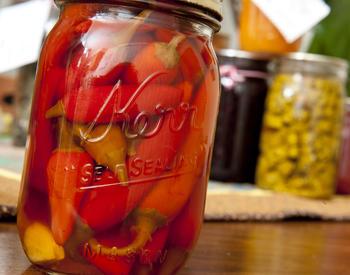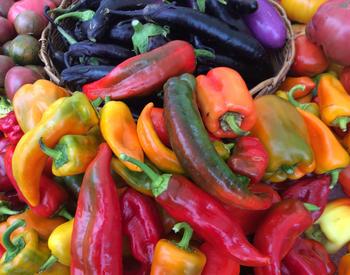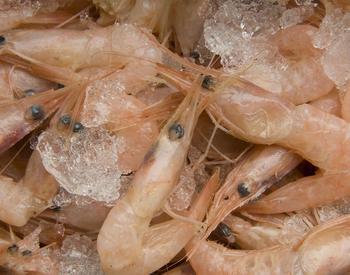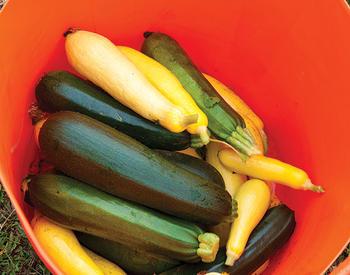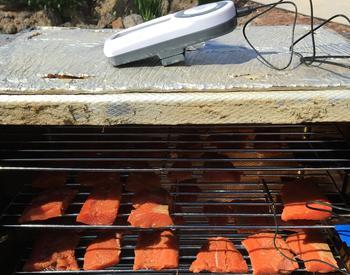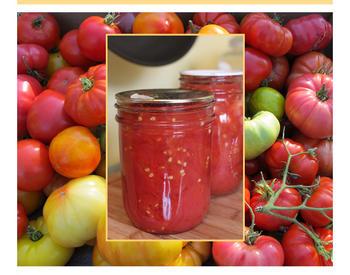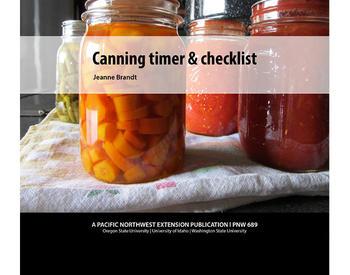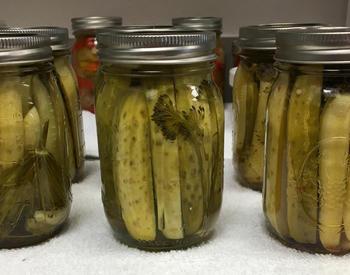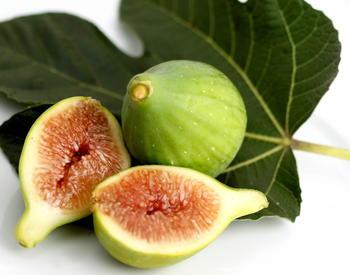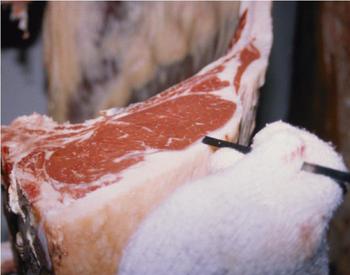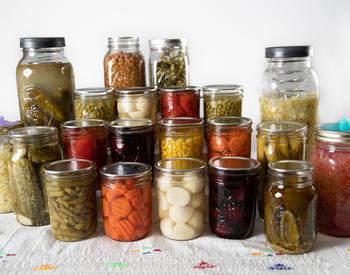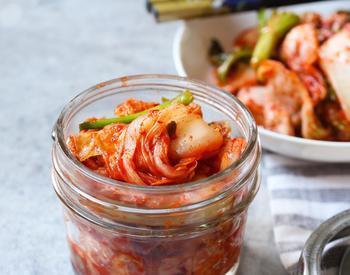Download this publication as a PDF
Frozen foods
Microorganisms can start to grow as food thaws. Thaw food in the refrigerator or microwave to keep the growth at a minimum. Thawed food should be cooked or served immediately or else refrigerated.
Thawed food may be refrozen if ice crystals are still in the food. However, refreezing may change the quality of the food (texture, color, flavor). For information on refreezing foods, see Extension publications on preventing foodborne illness and what to do if your home freezer stops.
Dried food
Dried foods should be reconstituted in the refrigerator if more than one or two hours are necessary for reconstitution. Any dried foods with signs of spoilage (such as mold formation or insect infestation) should be discarded.
Canned foods
Examine all canned foods before using them.
- Inspect the can or jar before opening.
- Tin cans — Both ends should be flat or curved slightly inward. All seams should be tight with no trace of leakage.
- Glass jars — Metal lids should be firm and flat or curved slightly inward. There should be no sign of leakage around the lid, rubber ring or elsewhere.
- As the can or jar is opened, notice whether there is an inrush or an outrush of air. Spoilage is indicated when the air rushes out or the liquid squirts.
- Smell the contents at once. The odor should be characteristic of the food. An "off" odor probably means spoilage.
- Check the food carefully to see that it appears to have the characteristic texture and color. The broth over canned meat and chicken may or may not be gelled. Liquids in most foods will be clear. Any change from the natural texture and color could indicate spoilage. Do not taste questionable foods.
- Discard canned food with signs of spoilage. High-acid food (such as fruit) may be discarded in the garbage can or in a garbage disposal. Spoiled low-acid food (such as vegetables, meat, fish, and poultry) must be discarded more cautiously because it could contain botulinal toxin.
To discard low-acid foods, remove the jar lid. Then place the jar, its contents and the loose lid in hot water and add enough water to cover the jar. Boil all items for 30 minutes. Cool and discard contents in garbage can or garbage disposal. This will prevent accidental poisoning.
To prevent the risk of botulism, low-acid foods (meat, fish, poultry, vegetables) and tomato products not canned according to the USDA-endorsed recommendations (such as those used by OSU) must be boiled even if you detect no sign of spoilage. Boil foods for 10 minutes at altitudes below 1,000 feet. Add one additional minute of boiling time for each additional 1,000 feet of elevation. The same length of time must be used if foods are heated in a microwave oven.
The following oven method for heating home-canned fish is suggested:
- Open the jar of fish and examine for spoilage. If spoilage is evident, discard the fish (without tasting) out of the reach of pets. Wash the lid before discarding or reusing it on the jar.
- Insert a meat thermometer upright into the center of the jar. The tip should be at the approximate center of the jar.
- Cover jar lid loosely with foil and place in an oven preheated to 350°F (180°C). Remove the jar from the oven when the thermometer registers 185°F. About 30 to 35 minutes will be needed.
- Let the jar stand at room temperature for about 30 minutes. This will allow the temperature to become uniform throughout. By using the thermometer to determine the temperature of the fish, this heat treatment is equivalent to "boiling."
- Serve the fish hot or refrigerate immediately for later use.
Note: Low-acid canned food used in casserole dishes baked at 350°F (180°C) for at least one hour will be adequately heated to destroy botulinum toxin. Be sure the casserole or pie is bubbling in the center before removing from oven and has reached an internal temperature of 185°F.
Related articles
Source: OSU Master Preserver Program
